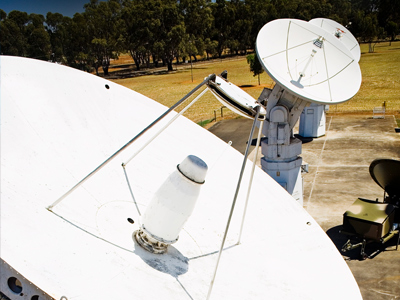Contested communications

The Contested Communications branch of Cyber and Electronic Warfare Division provides science and technology (S&T) advice and solutions for robust communications in contested, complex and dynamic environments and the development of protection measures to communicate threats.
The focus of research in this branch is in areas of network formation and reconfiguration, issues concerning communications electronic warfare, as well as network survivability and mission critical service availability.
The Contested Communications branch also provides advice and support with respect to capability development planning, major project acquisition and support to operations.
Protected satellite communications
Our Protected Satellite Communications group undertakes research and development (R&D) of, and provides S&T advice on, satellite communications for deployed and mobile tactical networking.
Specific areas of focus include dynamic satellite resource management and optimisation, satellite network vulnerability analysis, interference migration and response to electromagnetic interference, and advanced waveforms for interference mitigation.
Survivable networks
The Survivable Networks group undertakes R&D in the survivability of tactical radio networks operating in RF contested and denied environments. Particular emphasis is placed on using dynamic, autonomous platforms and planning optimisation tools.
Wireless protocols
The Wireless Protocols group under takes research and provides science and technology advice on the provisioning of robust communications in contested environments.
Specific areas of focus include autonomy and machine learning; radio networking protocols; co-site interface mitigation; and frequency management.
Position, navigation and timing (PNT) technologies and systems
The PNT Technologies and Systems group develops techniques for denying PNT to adversaries while maintaining our own PNT against electronic attack. This is a fundamental component of systemic electronic protection and effects.

